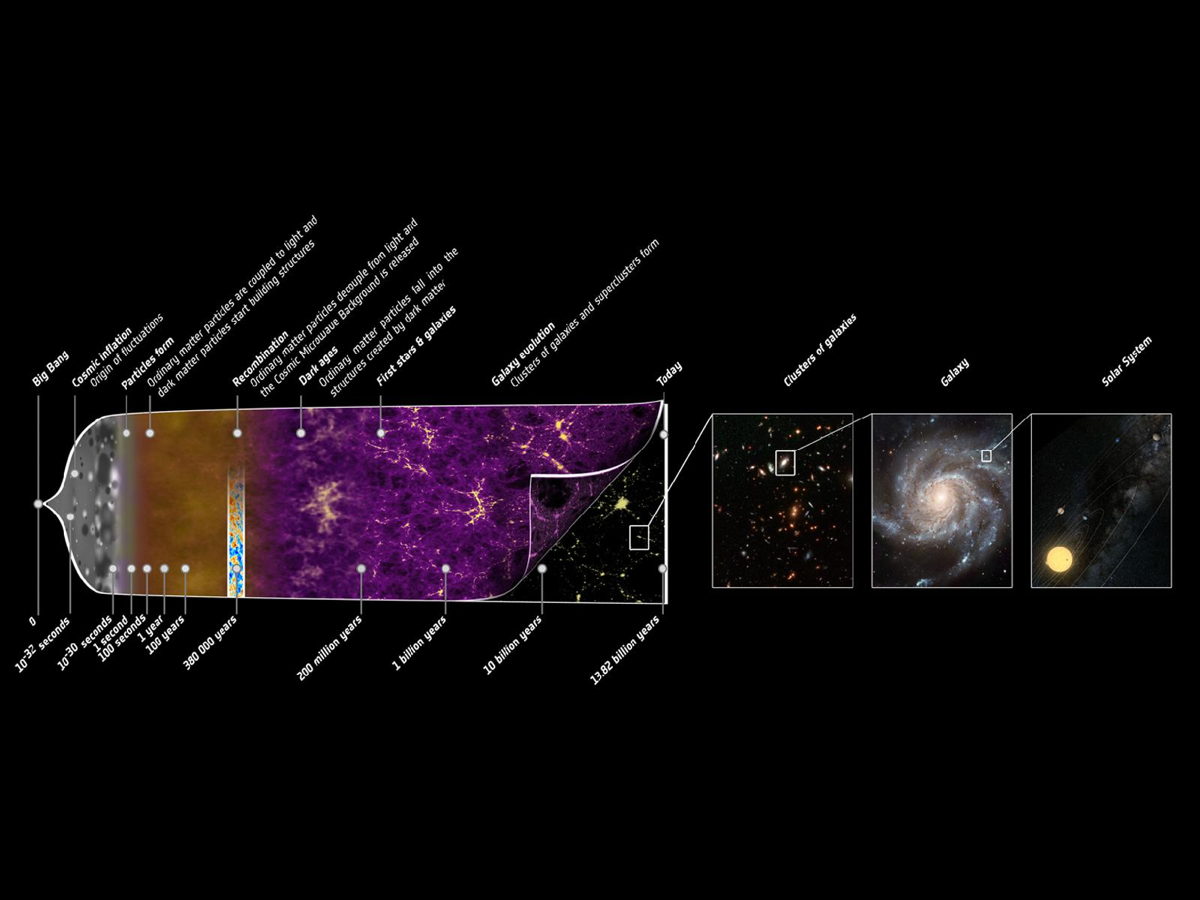Astrophysicists to Unveil 'Major Discovery' Today

Update for 12 pm ET: The major discovery announced today is the first direct evidence of cosmic inflation and gravitational waves, a key piece in understanding how our universe formed. See Space.com's story on the huge announcement: Major Discovery: 'Smoking Gun' for Universe's Incredible Big Bang Expansion Found
See our full coverage here: Cosmic Inflation & Gravitational Waves: Complete Coverage of Major Discovery
Supporting Multimedia:
- Big Bang Gravity Waves Discovered
- How Gravitational Waves Work
- Cosmic Inflation: How It Gave the Universe the Ultimate Kickstart
- Big Bang Theory: 5 Weird Facts About Seeing the Universe's Birth
- Gravitational Waves: The Big Bang's Smoking Gun
Original announcement:
Scientists will unveil what they are calling a "major discovery" in the field of astrophysics today (March 17) in a presentation at the Harvard-Smithsonian Center for Astrophysics (CfA).
CfA officials did not detail the nature of the astrophysics discovery in a media alert. They only stated that the center will "host a press conference at 12:00 noon EDT (16:00 UTC) on Monday, March 17th, to announce a major discovery." Space.com will provide complete coverage of today's announcement.
Related: 7 Surprising Things About the Universe
Get the Space.com Newsletter
Breaking space news, the latest updates on rocket launches, skywatching events and more!
The Harvard-Smithsonian Center for Astrophysics is made up of the Harvard College Observatory and the Smithsonian Astrophysics Observatory. Scientists at the center pursue studies of those basic physical process that determine the nature and evolution of the universe," according to the CfA website's official description.
The Harvard Observatory was founded in 1839 as a research arm of the university's astronomy department. The Smithsonian Astrophysics Observatory was founded in 1890. The two institutions merged 1973 to become a joint center for astrophysics research.
"Today, some 300 Smithsonian and Harvard scientists cooperate in broad programs of astrophysical research supported by Federal appropriations and University funds as well as contracts and grants from government agencies," CfA officials explain in a description. "These scientific investigations, touching on almost all major topics in astronomy, are organized into the following divisions, scientific departments and service groups."
Visit Space.com today at 12 p.m. ET (1600 GMT) for the results of the CfA announcement.
Email Tariq Malik at tmalik@space.com or follow him @tariqjmalik and Google+. Follow us @Spacedotcom, Facebook and Google+.
Join our Space Forums to keep talking space on the latest missions, night sky and more! And if you have a news tip, correction or comment, let us know at: community@space.com.

Tariq is the Editor-in-Chief of Space.com and joined the team in 2001, first as an intern and staff writer, and later as an editor. He covers human spaceflight, exploration and space science, as well as skywatching and entertainment. He became Space.com's Managing Editor in 2009 and Editor-in-Chief in 2019. Before joining Space.com, Tariq was a staff reporter for The Los Angeles Times covering education and city beats in La Habra, Fullerton and Huntington Beach. In October 2022, Tariq received the Harry Kolcum Award for excellence in space reporting from the National Space Club Florida Committee. He is also an Eagle Scout (yes, he has the Space Exploration merit badge) and went to Space Camp four times as a kid and a fifth time as an adult. He has journalism degrees from the University of Southern California and New York University. You can find Tariq at Space.com and as the co-host to the This Week In Space podcast with space historian Rod Pyle on the TWiT network. To see his latest project, you can follow Tariq on Twitter @tariqjmalik.